
SC-200: Microsoft Security Operations Analyst
PDFs and exam guides are not so efficient, right? Prepare for your Microsoft examination with our training course. The SC-200 course contains a complete batch of videos that will provide you with profound and thorough knowledge related to Microsoft certification exam. Pass the Microsoft SC-200 test with flying colors.

Curriculum for SC-200 Certification Video Course
| Name of Video | Time |
|---|---|
 1. Configuring the Lab Environment |
21:00 |
| Name of Video | Time |
|---|---|
 1. Threat Protection with Microsoft 365 Defender |
14:00 |
 2. Incidents in Microsoft 365 Defender |
52:00 |
 3. Remediate risks with Microsoft Defender for O365 |
19:00 |
 4. Microsoft Defender for Identity |
15:00 |
 5. Azure AD Identity Protection |
20:00 |
 6. Micrososft Defender for Cloud Apps |
22:00 |
 7. Respond to DLP Alerts |
16:00 |
 8. Manage Insider Risk Management in Microsoft 365 |
19:00 |
| Name of Video | Time |
|---|---|
 1. Protect against threats with Microsoft Defender for Endpoint |
9:00 |
 2. Deploy the Microsft Defender for Endpoint environment |
17:00 |
 3. Implement Windows Security Enhancements |
11:00 |
 4. Device Investigations |
23:00 |
 5. Perform actions on a device |
21:00 |
 6. Perform evidence and entities investigations |
11:00 |
 7. Configure and manage automation |
11:00 |
 8. Configure alerts and detections |
12:00 |
 9. Threat and Vulnerability Management |
16:00 |
| Name of Video | Time |
|---|---|
 1. Plan for cloud workload protections using Microsoft Defender for Cloud |
22:00 |
 2. Cloud workload protections in Microsoft Defender for Cloud |
38:00 |
 3. Connect Azure Assets To Microsoft Defender for Cloud |
17:00 |
 4. Connect non-Azure resources to Microsoft Defender for Cloud |
17:00 |
 5. Security Alerts in Microsoft Defender for Cloud |
26:00 |
| Name of Video | Time |
|---|---|
 1. Construct KQL statements for Microsoft Sentinel |
34:00 |
 2. Analyze query results |
16:00 |
 3. Build Multi-Table queries in KQL |
11:00 |
 4. Work with string data using KQL |
11:00 |
| Name of Video | Time |
|---|---|
 1. Microsoft Sentinel Overview |
16:00 |
 2. Create and Manage Microsoft Sentinel workspaces |
18:00 |
 3. Query logs in Microsoft Sentinel |
7:00 |
 4. Use Watchlists in Microsoft Sentinel |
8:00 |
 5. Use Threat Intelligence in Microsoft Sentinel |
11:00 |
| Name of Video | Time |
|---|---|
 1. Connect Data to Microsoft Sentinel using Data Connectors |
13:00 |
 2. Connect Microsoft 365 Defender to Microsoft Sentinel |
9:00 |
 3. Connect Microsoft Services to Microsoft Sentinel |
5:00 |
 4. Connect Windows Hosts to Microsoft Sentinel |
7:00 |
 5. Connect CEF logs to Microsoft Sentinel |
6:00 |
 6. Connect Syslog data to Microsoft Sentinel |
5:00 |
 7. Connect Threat Indicators to Microsoft Sentinel |
6:00 |
| Name of Video | Time |
|---|---|
 1. Threat Detection with Microsoft Sentinel Analytics |
22:00 |
 2. Security Incident managent in Microsoft Sentinel |
16:00 |
 3. Threat Response with Microsoft Sentinel Playbooks |
26:00 |
 4. Entity Behaviour Analytics in Microsoft Sentinel |
12:00 |
 5. Workbooks in Microsoft Sentinel |
10:00 |
| Name of Video | Time |
|---|---|
 1. Threat Hunting Concepts in Microsoft Sentinel |
10:00 |
 2. Threat Hunting with Microsoft Sentinel |
11:00 |
 3. Notebooks in Microsoft Sentinel |
11:00 |
Microsoft Security SC-200 Exam Dumps, Practice Test Questions
100% Latest & Updated Microsoft Security SC-200 Practice Test Questions, Exam Dumps & Verified Answers!
30 Days Free Updates, Instant Download!
SC-200 Premium Bundle

- Premium File: 408 Questions & Answers. Last update: Dec 3, 2025
- Training Course: 47 Video Lectures
- Study Guide: 441 Pages
- Latest Questions
- 100% Accurate Answers
- Fast Exam Updates
Microsoft SC-200 Training Course
Want verified and proven knowledge for Microsoft Security Operations Analyst? Believe it's easy when you have ExamSnap's Microsoft Security Operations Analyst certification video training course by your side which along with our Microsoft SC-200 Exam Dumps & Practice Test questions provide a complete solution to pass your exam Read More.
Complete Microsoft SC-200 Guide: Cloud Security and Compliance Management
Kickstart Your Career as a Microsoft SOC Engineer! Gain Hands-On Experience with Lab Exercises and Practical Demonstrations
Course Overview
The Microsoft SC-200 training course is designed for professionals who aspire to become security operations analysts within Microsoft environments. This course provides a comprehensive understanding of the tools, techniques, and processes used to monitor, detect, investigate, and respond to cybersecurity threats. Security is no longer confined to firewalls or simple endpoint protections; it now involves a coordinated approach that includes identity management, cloud security, compliance, and continuous threat monitoring.
Through this course, learners gain practical knowledge of Microsoft’s suite of security solutions, including Microsoft Sentinel, Microsoft Defender, and Microsoft 365 security services. The curriculum emphasizes real-world scenarios, enabling participants to understand how to respond effectively to threats, automate security tasks, and maintain regulatory compliance. Security operations analysts play a critical role in protecting organizations from modern cyber risks, and this course equips them with the necessary skills to perform these functions efficiently.
By the end of the course, participants will have a solid foundation in Microsoft security tools and be well-prepared to pursue the SC-200 certification, which validates their expertise in threat detection, incident response, and compliance management.
What You Will Learn From This Course
How to navigate the Microsoft security ecosystem, including cloud security services and on-premises integration
Monitoring and analyzing security events using Microsoft Sentinel
Investigating incidents and responding to security threats using Microsoft Defender
Implementing threat protection strategies to safeguard organizational data
Understanding identity management and securing access to Microsoft 365 and Azure resources
Leveraging compliance management tools to meet regulatory requirements
Using automated workflows to respond to incidents efficiently
Writing queries in Kusto Query Language for data analysis and alert customization
Applying best practices for continuous monitoring, reporting, and threat intelligence
This course is designed to ensure learners not only understand the theory behind security operations but also gain hands-on experience with the tools they will use in real-world scenarios. The skills developed in this course are immediately applicable in cybersecurity roles across diverse industries, making it a valuable investment for IT professionals.
Learning Objectives
By completing this course, participants will be able to:
Explain the Microsoft security framework and its various components
Configure Microsoft Sentinel to collect, analyze, and respond to security events
Perform incident investigation and remediation using Microsoft Defender
Implement identity protection and conditional access policies for cloud resources
Analyze threat intelligence to detect potential risks proactively
Develop automated workflows to streamline threat response and reduce human error
Understand and apply compliance management principles for organizational data protection
Create and run Kusto Query Language scripts to identify suspicious activity
Collaborate with IT and security teams to maintain a robust security posture
These objectives ensure that learners not only prepare for the SC-200 exam but also acquire practical skills that enhance their value as security operations analysts. The course balances theoretical knowledge with practical exercises to reinforce learning.
Requirements
Participants enrolling in this course should have a basic understanding of IT and networking concepts. While no advanced security knowledge is required, familiarity with cloud computing, Microsoft 365, and Azure services will help learners grasp the concepts more quickly.
The course is ideal for:
IT professionals seeking to transition into a security-focused role
Existing security analysts aiming to enhance their knowledge of Microsoft security solutions
Professionals responsible for monitoring, managing, and responding to cybersecurity threats
Individuals interested in pursuing SC-200 certification
To maximize the benefits of the course, learners should have access to a Microsoft 365 or Azure environment to practice hands-on labs and exercises. Access to administrative privileges in these environments will enable participants to configure and explore security tools effectively.
Course Description
The Microsoft SC-200 training course provides a detailed exploration of the responsibilities, tools, and techniques required to become an effective security operations analyst. Security operations analysts are responsible for monitoring, detecting, investigating, and responding to threats within Microsoft cloud and hybrid environments. They leverage a range of security solutions to protect organizational data, applications, and networks.
The course begins with an overview of Microsoft’s security ecosystem, introducing learners to the various tools and services used to protect cloud and on-premises environments. Participants will learn about Microsoft Sentinel, a cloud-native security information and event management platform, and how it integrates with Microsoft Defender and other security solutions to provide comprehensive threat protection.
Modules within the course cover essential skills such as configuring data connectors, writing Kusto Query Language scripts for threat analysis, creating automated workflows for incident response, and implementing security policies to maintain compliance. Emphasis is placed on understanding real-world threat scenarios and applying knowledge to investigate and remediate incidents effectively.
Practical exercises and labs are included throughout the course to reinforce concepts, enabling learners to develop hands-on experience with Microsoft security tools. By the end of the course, participants will be confident in their ability to detect and respond to threats, manage compliance requirements, and optimize security operations within a Microsoft environment.
Target Audience
This course is designed for professionals who want to specialize in security operations within Microsoft environments. The target audience includes:
Security analysts and IT professionals who want to develop expertise in Microsoft security tools
Individuals seeking the SC-200 certification to advance their cybersecurity careers
IT administrators responsible for managing security monitoring, threat response, and compliance
Cloud administrators and architects interested in integrating security operations into Microsoft 365 and Azure environments
Professionals in organizations of all sizes looking to strengthen their threat protection capabilities and security posture
The content is structured to accommodate learners at various levels of experience, providing foundational knowledge as well as advanced techniques for managing security operations and responding to complex threats.
Prerequisites
While no advanced security experience is required, participants will benefit from the following prerequisites:
Basic understanding of networking, IT infrastructure, and cloud computing concepts
Familiarity with Microsoft 365 and Azure administration
Knowledge of basic security principles, including threat types, incident response, and risk management
Willingness to engage in hands-on labs and practical exercises
Participants who meet these prerequisites will find it easier to follow the course modules and apply the concepts in real-world scenarios. Those who are new to Microsoft cloud services may consider reviewing foundational materials on Microsoft 365 and Azure administration before starting the course.
Course Modules/Sections
The Microsoft SC-200 training course is structured into multiple modules to provide a comprehensive understanding of security operations within Microsoft environments. Each module is designed to progressively build knowledge and skills, beginning with fundamental concepts and advancing to complex scenarios. The course begins with an introduction to Microsoft Sentinel and the broader security ecosystem, explaining how these tools fit into the daily responsibilities of a security operations analyst. Learners will explore the architecture of Microsoft Sentinel, its integration with other Microsoft security tools, and its role in collecting and analyzing data from multiple sources.
Subsequent modules focus on configuring Sentinel, including connecting data sources, creating dashboards, and setting up alerts. Learners will gain hands-on experience in using Kusto Query Language to investigate incidents, monitor activities, and customize alerts based on organizational needs. This section emphasizes practical skills, ensuring that participants can translate theoretical knowledge into actionable security practices.
The course also covers incident response in depth, with modules dedicated to understanding the lifecycle of security incidents, triaging alerts, and responding to threats efficiently. Learners will explore the integration of Microsoft Defender with Sentinel, enabling them to perform endpoint and cloud security monitoring, threat hunting, and remediation. Advanced modules address threat intelligence, automated workflows, and compliance management, ensuring that learners are prepared for both the SC-200 exam and real-world scenarios.
Hands-on labs are incorporated throughout the modules to reinforce learning. By completing exercises that simulate real incidents, participants develop confidence in applying their skills in operational environments. The course structure allows learners to progress at a logical pace, gradually increasing in complexity while maintaining engagement and clarity.
Key Topics Covered
The Microsoft SC-200 course covers a wide range of topics that are essential for security operations analysts. The course begins with a detailed overview of Microsoft’s security ecosystem, helping learners understand the relationships between Microsoft Sentinel, Microsoft Defender, and cloud security solutions. Participants explore the concepts of security monitoring, incident investigation, and threat protection within Microsoft 365 and Azure environments.
A significant portion of the course is dedicated to Microsoft Sentinel. Learners are taught how to configure data connectors, create custom dashboards, and analyze logs using Kusto Query Language. They will also understand how to set up automated alerts and integrate Sentinel with other Microsoft security tools to provide a unified approach to threat detection and response. The course highlights practical examples, such as detecting suspicious logins, monitoring endpoint activity, and investigating potential ransomware attacks.
Incident response and threat management are core topics in the curriculum. Learners gain insight into identifying, prioritizing, and responding to alerts, with an emphasis on minimizing the impact of incidents. The course covers collaboration with IT teams, documenting responses, and leveraging automation to streamline security operations. Threat intelligence is explored in depth, enabling participants to anticipate potential risks, recognize patterns of malicious behavior, and apply proactive measures to protect organizational assets.
Identity and access management is another critical area. Participants learn how to implement conditional access policies, monitor user activities, and respond to compromised credentials. The course also covers best practices for securing cloud workloads, including Azure and Microsoft 365 environments, and applying compliance management tools to meet regulatory requirements. Additional topics include auditing, reporting, and continuous monitoring to maintain a robust security posture.
By covering these key topics, the course ensures that participants develop both theoretical understanding and practical skills. This combination prepares learners to handle real-world cybersecurity challenges effectively while also equipping them with the knowledge required to succeed in the SC-200 exam.
Teaching Methodology
The teaching methodology of the Microsoft SC-200 course is designed to balance theoretical understanding with hands-on practice. Instruction begins with conceptual explanations of security operations, including threat detection, incident response, and compliance management. Each concept is reinforced with practical examples and real-world scenarios that illustrate how these principles are applied in professional environments.
Hands-on labs form a core part of the learning process. Participants engage in exercises that simulate real incidents, enabling them to configure Microsoft Sentinel, monitor logs, investigate alerts, and implement automated responses. These labs provide opportunities to apply Kusto Query Language scripts, set up dashboards, and integrate Microsoft Defender with Sentinel to monitor endpoint and cloud security. The hands-on approach ensures that learners gain confidence in using tools and techniques that are essential for security operations analysts.
Interactive discussions and case studies are also incorporated to enhance understanding. Participants analyze security incidents, identify root causes, and propose remediation strategies. This approach encourages critical thinking and problem-solving, helping learners develop the skills needed to respond to complex threats. Instruction is supplemented with demonstrations, visual aids, and guided exercises that clarify concepts and reinforce learning.
In addition, the course emphasizes self-paced learning, allowing participants to progress through modules at a comfortable speed. Online resources, including lab environments, documentation, and practice exercises, support independent study. This flexible methodology ensures that learners can balance the course with professional responsibilities while gaining a deep understanding of Microsoft security operations.
Assessment & Evaluation
Assessment and evaluation within the Microsoft SC-200 course are designed to measure both knowledge and practical skills. Participants are evaluated through a combination of quizzes, lab exercises, and scenario-based assessments. Quizzes test conceptual understanding of security operations, Microsoft Sentinel configuration, threat intelligence, incident response, and compliance management. These evaluations ensure that learners grasp the fundamental principles before applying them in practical scenarios.
Lab exercises form a critical component of assessment. Participants complete hands-on tasks that simulate real-world security incidents, such as detecting suspicious activity, investigating alerts, and implementing automated response workflows. These exercises evaluate the ability to apply knowledge in operational contexts, demonstrating proficiency with Microsoft security tools and techniques. Completion of lab exercises is monitored to ensure that learners are able to configure Sentinel, perform investigations, and respond to incidents effectively.
Scenario-based assessments present complex, multi-step security challenges that require learners to integrate knowledge from multiple modules. Participants analyze the situation, identify threats, prioritize actions, and execute appropriate responses using Microsoft Sentinel and Defender. These assessments evaluate critical thinking, decision-making, and technical proficiency in managing real-world security incidents.
Continuous evaluation is also emphasized throughout the course. Participants receive feedback on lab exercises and assessments, helping them identify areas for improvement and reinforcing learning outcomes. This iterative approach ensures that learners develop both theoretical understanding and practical skills needed for success in the SC-200 exam and in professional security operations roles.
The combination of quizzes, labs, scenario assessments, and continuous feedback creates a comprehensive evaluation framework. Participants gain confidence in their abilities, track their progress, and demonstrate readiness to handle cybersecurity responsibilities within Microsoft environments.
Benefits of the Course
The Microsoft SC-200 training course offers a multitude of benefits for IT professionals, security analysts, and anyone looking to specialize in cybersecurity operations within Microsoft environments. One of the primary advantages of this course is the acquisition of practical skills that can be applied immediately in real-world security operations. Participants gain hands-on experience in configuring Microsoft Sentinel, investigating alerts, implementing automated workflows, and managing cloud security, which makes them more effective in protecting organizational assets.
Another significant benefit is the preparation it provides for the SC-200 certification exam. This certification is recognized globally as a benchmark for Microsoft security expertise and demonstrates proficiency in threat detection, incident response, and compliance management. Professionals who complete the course and achieve certification enhance their credibility and career prospects, positioning themselves for advanced roles in security operations, cloud security, and cybersecurity leadership.
The course also emphasizes the integration of threat intelligence into day-to-day security operations. Participants learn to anticipate potential threats, identify patterns of malicious activity, and implement proactive measures to mitigate risks. This proactive approach not only strengthens organizational security posture but also reduces the likelihood of security breaches and data loss.
Hands-on labs and scenario-based exercises are another key benefit. Learners engage with realistic incident response scenarios, including detecting compromised credentials, investigating ransomware activity, and responding to phishing attacks. These exercises allow participants to develop confidence in using Microsoft security tools and improve their decision-making and analytical skills.
In addition, the course provides knowledge of compliance management and regulatory requirements. Participants gain insight into policies and tools that ensure organizational adherence to standards such as GDPR, HIPAA, and other data protection regulations. This understanding is essential for organizations that must demonstrate accountability and maintain secure operations.
The skills and knowledge gained from the course are transferable across different Microsoft environments, including Microsoft 365 and Azure. Professionals who complete the training can effectively monitor cloud workloads, protect endpoints, and respond to threats in hybrid environments. These capabilities are highly valued by employers and provide participants with a competitive edge in the cybersecurity job market.
By combining theoretical understanding with practical application, the Microsoft SC-200 course equips learners to handle complex security challenges. Participants leave the course with the confidence and expertise needed to perform as proficient security operations analysts, improve organizational security posture, and pursue career advancement in cybersecurity and cloud security domains.
Course Duration
The Microsoft SC-200 training course is designed to be comprehensive yet flexible, accommodating participants with different levels of experience and varying schedules. On average, the course can be completed in approximately 40 to 50 hours, depending on the pace at which learners progress through the modules. This duration includes instructional videos, hands-on labs, practical exercises, and self-assessment activities.
The course is structured to allow for self-paced learning, giving participants the flexibility to complete modules according to their availability. Each module is divided into sections that focus on specific topics, such as Microsoft Sentinel configuration, incident response, threat intelligence, cloud security, and compliance management. This modular structure ensures that learners can absorb information systematically while applying their knowledge through practical exercises.
Hands-on labs are an integral part of the course duration, typically requiring a few hours per module to complete. These labs simulate real-world scenarios, such as monitoring cloud workloads, responding to endpoint threats, and investigating suspicious activities. By incorporating these practical exercises, the course ensures that learners gain experience in performing security operations tasks that mirror professional environments.
In addition to the core modules and labs, participants are encouraged to dedicate time to review documentation, practice Kusto Query Language queries, and explore additional Microsoft security tools. This supplementary study enhances understanding and reinforces skills, contributing to overall readiness for the SC-200 exam.
The course duration is also designed to accommodate continuous learning. Participants can revisit modules, redo labs, and practice scenario-based exercises to reinforce understanding and retention. This approach ensures that learners develop both theoretical knowledge and practical skills over a reasonable timeframe, preparing them for both certification and real-world cybersecurity challenges.
By the end of the course, learners will have completed a comprehensive training program that equips them with the necessary expertise to monitor, detect, investigate, and respond to security threats effectively. The structured duration allows for deep engagement with the material while providing sufficient time for hands-on practice and mastery of Microsoft security tools.
Tools & Resources Required
To maximize the benefits of the Microsoft SC-200 course, participants need access to several essential tools and resources. These resources enable hands-on practice, experimentation, and application of theoretical concepts, ensuring a practical understanding of security operations within Microsoft environments.
First, access to Microsoft 365 and Azure environments is essential. Participants require administrative privileges in these environments to configure security settings, connect data sources, and implement monitoring dashboards. Microsoft 365 provides a platform to explore identity management, conditional access policies, and endpoint protection, while Azure allows learners to monitor cloud workloads, deploy security solutions, and implement automated workflows.
Microsoft Sentinel is a central tool in this course. Participants will configure Sentinel to collect and analyze data from various sources, investigate incidents, and implement automated playbooks. Hands-on experience with Sentinel is critical for understanding how to detect and respond to threats effectively. Learners will also practice writing Kusto Query Language scripts to filter logs, create alerts, and generate reports.
Microsoft Defender is another essential resource. Participants will explore Defender’s capabilities for endpoint protection, threat detection, and cloud security monitoring. By integrating Defender with Sentinel, learners gain a comprehensive view of organizational security, enabling them to investigate incidents and respond efficiently. Practical exercises with Defender reinforce understanding of real-world security operations and enhance participants’ analytical skills.
Additional tools include documentation and online learning resources provided by Microsoft. These resources offer step-by-step guides, tutorials, and reference materials that support learning and practice. Access to forums and community support allows participants to ask questions, share insights, and learn from experienced professionals in the field of cybersecurity.
Participants may also utilize virtual labs or sandbox environments to simulate security incidents without impacting production systems. These controlled environments enable experimentation with different configurations, testing of automated workflows, and practice of incident response procedures. Such resources are invaluable for gaining confidence in applying security operations techniques.
Furthermore, learners are encouraged to have basic networking and IT infrastructure tools available, such as virtual machines, network simulators, and monitoring software. These tools support a deeper understanding of how security solutions interact with organizational systems and allow learners to practice troubleshooting and analysis in a realistic context.
By providing access to these tools and resources, the course ensures that participants can engage fully with the material, apply theoretical knowledge, and develop the skills required for successful security operations. The combination of Microsoft environments, hands-on labs, documentation, and supplementary tools creates a rich learning experience that prepares learners for both the SC-200 exam and professional cybersecurity roles.
Career Opportunities
Completing the Microsoft SC-200 training course opens a wide range of career opportunities for IT professionals and security analysts. Organizations across industries are increasingly focused on protecting their digital assets, and certified professionals with expertise in Microsoft security tools are in high demand. Security operations analysts play a critical role in monitoring, detecting, investigating, and responding to threats in Microsoft environments, making them indispensable in both large enterprises and smaller organizations.
Graduates of the course can pursue roles such as security operations analyst, cybersecurity analyst, cloud security specialist, and incident response professional. These positions involve responsibilities such as monitoring security events, conducting threat assessments, responding to security incidents, and ensuring compliance with regulatory standards. Professionals with SC-200 certification are recognized for their ability to leverage Microsoft Sentinel, Microsoft Defender, and other Microsoft security tools to protect organizational data and maintain a strong security posture.
The course also prepares learners for more advanced roles, including security consultant, security engineer, and cloud security architect. These roles require a deeper understanding of security operations, cloud infrastructure, and threat intelligence, which are key components of the SC-200 curriculum. By gaining hands-on experience and theoretical knowledge through the course, participants enhance their qualifications and improve their competitiveness in the cybersecurity job market.
In addition to technical skills, the course helps develop soft skills that are essential for career growth. Security professionals must communicate effectively with IT teams, management, and stakeholders to report incidents, propose solutions, and maintain organizational security. Analytical thinking, problem-solving, and proactive decision-making are cultivated through scenario-based exercises and hands-on labs included in the training.
The career opportunities for SC-200 certified professionals extend across industries, including finance, healthcare, government, technology, and manufacturing. Organizations in these sectors rely on security operations analysts to protect sensitive information, manage cloud security, and maintain compliance with industry regulations. Professionals who complete the course are well-positioned to advance their careers, take on leadership roles, and contribute significantly to organizational cybersecurity initiatives.
Furthermore, the demand for cybersecurity expertise continues to grow, with organizations increasingly seeking professionals who can manage complex security operations in hybrid and cloud environments. By completing the SC-200 training course, learners acquire skills that are not only relevant today but will remain in high demand as digital transformation and cloud adoption continue to expand. This long-term career potential makes the course a valuable investment for IT professionals seeking stability, growth, and recognition in the cybersecurity field.
Enroll Today
Enrolling in the Microsoft SC-200 training course is the first step toward building a successful career in security operations and cybersecurity. The course offers a structured, hands-on learning experience that equips participants with the knowledge and skills needed to monitor, detect, investigate, and respond to security threats within Microsoft environments. By enrolling, learners gain access to comprehensive modules, practical labs, scenario-based exercises, and resources that prepare them for the SC-200 certification exam and professional cybersecurity roles.
The enrollment process is designed to be straightforward, allowing participants to begin learning quickly and efficiently. Once enrolled, learners can access the course materials at their own pace, complete modules in a logical sequence, and participate in hands-on exercises that simulate real-world security scenarios. This flexible approach ensures that participants can balance learning with professional responsibilities, making the course suitable for both full-time IT professionals and individuals looking to upskill in their current roles.
Participants who enroll today will benefit from expert instruction, practical guidance, and access to a variety of resources, including Microsoft environments, labs, and documentation. The course emphasizes active engagement, allowing learners to apply concepts immediately and develop confidence in using Microsoft security tools. By the end of the training, participants will be prepared to take the SC-200 exam, advance their careers, and contribute effectively to organizational security operations.
Enrolling in the SC-200 course also connects learners with a community of security professionals and peers. This network provides opportunities for collaboration, knowledge sharing, and ongoing support as participants continue to grow their expertise. The course encourages continuous learning, with modules and exercises designed to reinforce knowledge and develop skills that are essential for long-term success in cybersecurity.
Taking the step to enroll today is an investment in professional growth, technical proficiency, and career advancement. The SC-200 training course not only prepares participants for certification but also equips them with the practical skills needed to excel in security operations roles, protect organizational assets, and respond effectively to emerging threats in an increasingly complex digital landscape.
Prepared by Top Experts, the top IT Trainers ensure that when it comes to your IT exam prep and you can count on ExamSnap Microsoft Security Operations Analyst certification video training course that goes in line with the corresponding Microsoft SC-200 exam dumps, study guide, and practice test questions & answers.
Purchase Individually




Microsoft Training Courses
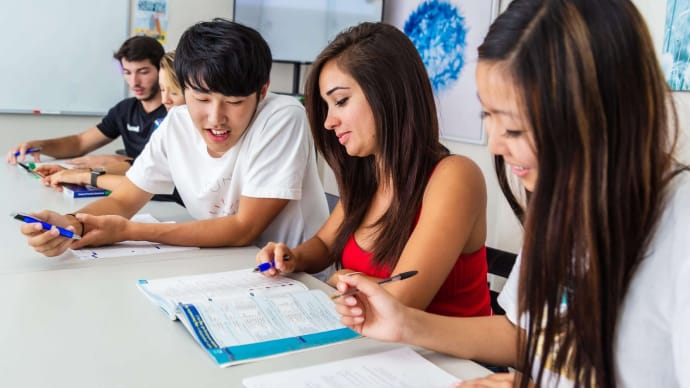









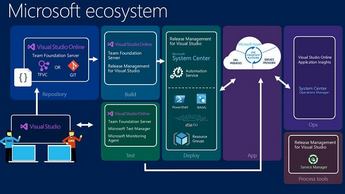










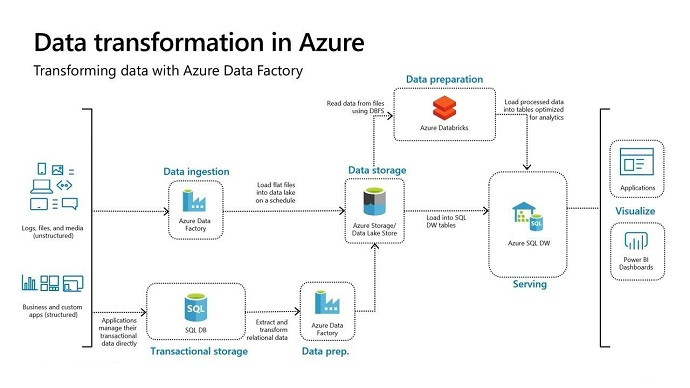









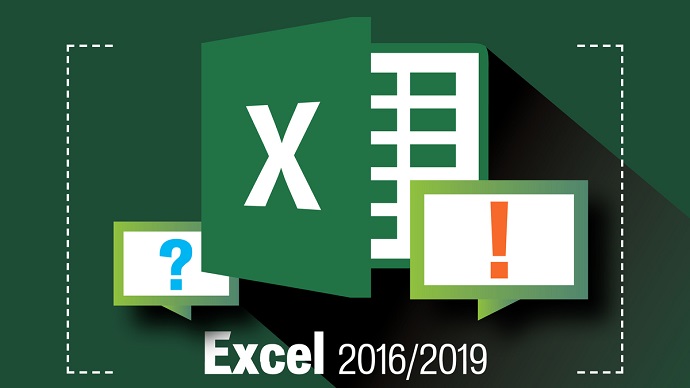





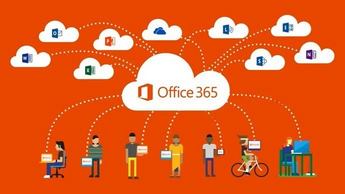
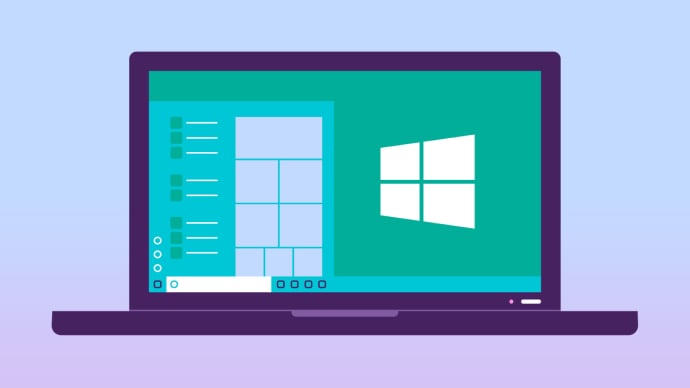







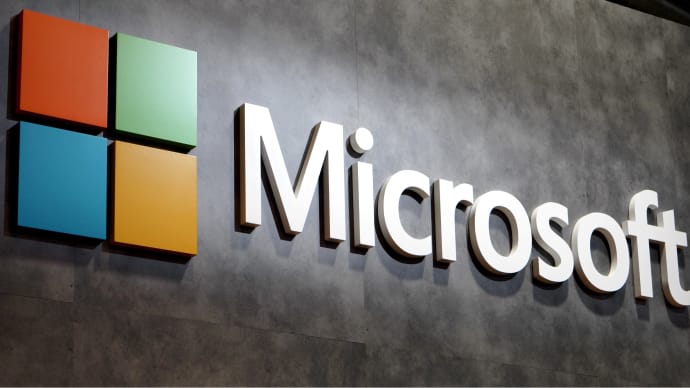
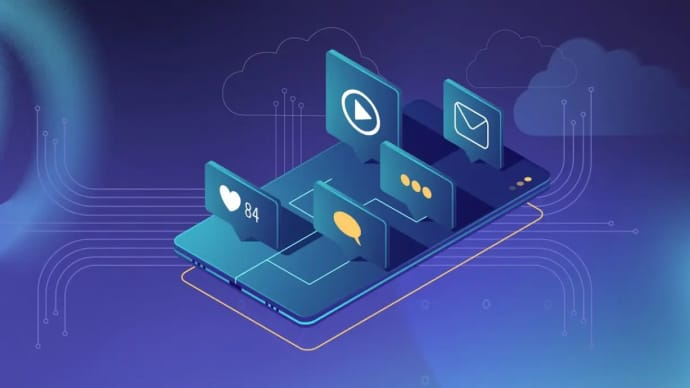
Only Registered Members can View Training Courses
Please fill out your email address below in order to view Training Courses. Registration is Free and Easy, You Simply need to provide an email address.
- Trusted by 1.2M IT Certification Candidates Every Month
- Hundreds Hours of Videos
- Instant download After Registration






